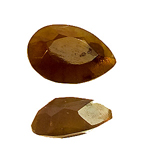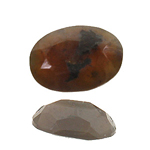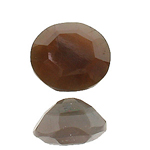Bahianite
Very rare mineral, first described in 1979
The most striking property of this otherwise unimpressive mineral is it's hardness 9 on Mohs' scale.
Bahianite shop



As of 2013, there are only 5 other minerals of hardness 9, besides corundum, the reference stone of Mohs' scale of hardness. These are bahianite, bromellite, karelianite, kharambaevite and nierite.
Origin of name: named after it's location in the Brazilian state of Bahia
Synonyms and trade names: none
Can be confused with: due to the hardness, the adamant lustre and the colour, bahianite can hardly be confused.
Localities: within a 25km radius around the Pico das Almas, a 1980m high mountain in the Sierra das Almas, Bahia, Brazil.
Handling: should you be the first to use bahianite in jewellery, mind the perfect cleavage! You will love to learn that bahianite is unsusceptible to acids and should survive galvanic baths unaltered (no guarantee, though!).
Worth knowing: Bbahianite was found by garimpeiros in search of cassiterite, an important tin ore. The water-worn pebbles are more or less bean-shaped and thus are called favas (beans) in garimpeiro lingo.
Bahianite shop
 Deutsch
Deutsch